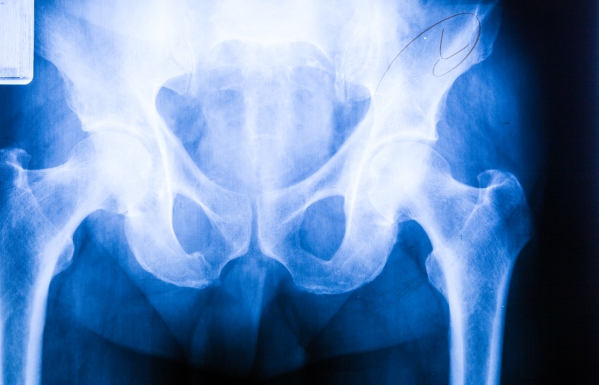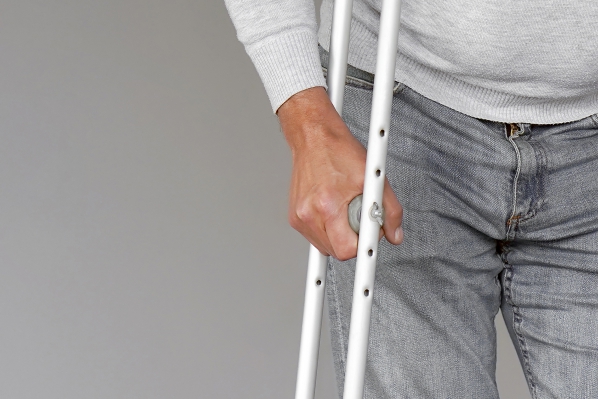What is a hip fracture?
A hip fracture is when the upper part of your femur breaks. The femur is the only bone found in your thigh. It is the strongest and longest bone in the body. This condition mainly occurs in older people due to weaker bones, poor vision and balance which makes them more prone to falls. However, car crashes may result in hip fractures in people of all ages. This condition can result in severe complications and can even be life-threatening.
In the United States, around 310,000 people were hospitalised with hip fractures in the year 2003. Hip fractures most commonly occurs in people aged between 65-99 years. Unfortunately, one third of people with hip fractures are not able to regain their ability to live independently. Furthermore, the mortality rate is about 1-10% and are higher in men than in women.
The treatment of hip fracture mainly involves surgery to either repair or replace the hip joint. This is followed by physical therapy to help the person regain their mobility.
What are the risk factors of hip fractures?
The risk factors of hip fractures include:
- Age: As your age increases, your bones becomes weaker and your vision deteriorates which affects your balance, making you more prone to falls.
- Osteoporosis: This condition is when your bone density decreases which increases your risk of fractures.
- Sex: Women are 3 times more at risk of having hip fractures than men. This is partly because menopause causes a decrease in the estrogen level resulting in a decrease in bone density.
- Obesity: Obesity increases your risk of having a hip fracture due to the increased pressure exerted on your hips during a fall.
- Medications: Long-term use of corticosteroids such as prednisolone increases your risk of having hip fractures as this drug weakens your bones. In addition, other medications such as benzodiazepines, antidepressants or opioids can make you lightheaded which increases your risk of falling and breaking your hip.
- Medical conditions: Certain medical condition such as diabetes mellitus and hyperthyroidism may weaken your bones, increasing your risk of having a hip fracture.
- Lack of physical activity: This results in weak muscles and bones increasing your risk of having a hip fracture.

What are the signs and symptoms of hip fractures?
The signs and symptoms of a hip fracture include:
- Severe hip pain.
- Unable to get up from a fall.
- Unable to put weight on the side of the affected hip.
- Swelling or bruising around the affected hip.
- The leg appear to be shorter in the affected side.
- Your affected leg falls outwards.


Making a diagnosis
To make a diagnosis, your doctor will take a detailed history from you to know more about your symptoms and how you got the injury. After the history taking, your doctor will perform a thorough physical examination to look for signs of hip fracture. Your doctor will order some tests to confirm the diagnosis and these include:
- Blood group and cross-matching: These are done to prepare for blood transfusion which may be required during surgery.
- X-ray of the hip: An x-ray of the hip is done to determine the location and severity of the fracture. This is usually the first and most important imaging test to be done in case of suspected hip fracture.
- Bone scanning: This imaging technique is used to detect tiny cracks in the hip bone.
- Magnetic Resonance Imaging (MRI) scan: An MRI scan of the hip is the imaging of choice if no abnormality is detected on x-rays of someone with a suspected hip fracture. This imaging technique is very accurate but is expensive which is why it is used only in special cases.
Hip fractures occur mainly in 2 locations:
- The femoral neck: This is the upper portion of the femur which is located just beneath the femoral head (ball part) of the ball-and-socket joint.
- The intertrochanteric region: This region is located a few centimetres lower than the femoral neck.

What are the treatments of hip fractures?
The treatment of hip fractures starts by giving adequate pain killers to relieve the pain associated with hip fractures. Intravenous opioids provides faster relief of the pain. The definitive treatment of a hip fracture requires surgery. There are several types of surgery which may be performed and these include:
- Total hip replacement: This surgical procedure is also known as total hip arthroplasty. This involves your orthopaedic surgeon removing the upper part of your femur and the socket of your hip to replace it with a prosthesis (artificial parts).
- Partial hip replacement: This surgical procedure is also known as hemiarthroplasty. This involves your orthopaedic surgeon removing only the upper part of the femur to replace it with a metal replacement. This treatment option is considered in people who have other medical issues, do not live independently or have a life expectancy of less than 5 years.
- Open reduction with internal fixation (ORIF): ORIF is a surgical procedure during which your orthopaedic surgeon inserts metal screws into the hip bone in order to stabilise the joint until the bone heals.
Antibiotics are given after surgery to prevent development of infections. In addition, anticoagulation medications are given to prevent the development of blood clots within your bloodstream which can lead to fatal complications such as pulmonary embolism- this is when a blood clot forms elsewhere in your bloodstream and travels all the way to your lungs through your heart causing death.

Rehabilitation is an important part of the management of hip fractures as it enables you to regain your mobility faster. This include range of motion and strengthening exercises.
What are the complications of hip fractures?
The complications of hip fractures include:
- Pulmonary embolism
- Bedsores
- Infection of your lungs (pneumonia)
- Death
- Urinary tract infections
- Failure of the bone to heal
- Dislocation of the hip joint
- Infection of the surgery site
Prognosis
The prognosis of hip fractures depends on the severity, type and location of the fracture. In addition, the condition and age of the person also plays an important role in the prognosis of hip fractures. Unfortunately, 4% of people die after a hip fracture due to complications from the fracture, prolonged immobilisation or the surgical procedure. In most cases, the surgery is successful resulting in the person regaining his/her mobility with few restrictions.

Source:
J. Alastair, I. and Simon, M., 2016. Davidson's Essentials of Medicine. 2nd ed. London: ELSEVIER.
Parveen, K. and Michael, C., 2017. Kumar & Clarks Clinical Medicine. 9th ed. The Netherlands: ELSEVIER.
Foster, K., 2021. Overview Of Common Hip Fractures In Adults.
Morrison, S., 2021. Hip Fracture In Adults: Epidemiology And Medical Management.
Malanga, G., 2021. Femoral Neck Fracture Treatment & Management: Acute Phase, Recovery Phase, Maintenance Phase.



